MaryAnn Bernal's Blog, page 295
April 8, 2014
Cate Blanchett sets her sights on Sutton Hoo drama The Dig
 Oscar-winning star of Blue Jasmine in talks to play amateur archaeologist in Susanne Bier's period drama
Oscar-winning star of Blue Jasmine in talks to play amateur archaeologist in Susanne Bier's period dramaBen Child
Sutton coup? … Cate Blanchett looks set to star in Susanne Bier's drama The Dig. Photograph: Jeff Kravitz/FilmMagicCate Blanchett is in talks to play the grieving widow who oversaw one of Britain's greatest archaeological finds in the Susanne Bier period drama The Dig, reports Screen.
Blanchett looks set to play amateur archaeologist Edith Pretty, a driving force behind the 1938-9 excavation of Sutton Hoo burial grounds near Woodbridge, Suffolk. The grounds were unearthed on the Sutton Hoo House estate which Pretty owned along with her husband Frank, who had died four years earlier, after she hired archaeologist Basil Brown to begin an excavation.
Brown made some promising early finds in 1938. But it was when he returned in the summer of 1939 for a further dig that the real treasure was discovered. A 27-metre seventh-century Saxon ship, most likely the last resting-place of King Rædwald of East Anglia, was among the new finds. Pretty donated the entire discovery to the British Museum, and the House and burial site are now in the care of the National Trust.
Screen reports that the script by Tamara Drewe and Byzantium writer Moira Buffini, based on John Preston's novel The Dig, represents a "layered piece with great emotional weight in the tradition of films like The Remains of the Day, spanning love, life and death".
Both Blanchett and Bier are Oscar-winners: the Australian actor won best supporting actress in 2005 for Martin Scorsese's The Aviator and best actor this year for the Woody Allen comedy Blue Jasmine. The Danish film-maker's drama In a Better World won the best foreign language film prize at the 2011 Academy Awards.
The Dig is being put together by Philomena producer Gaby Tana, Clerkenwell Films, and former Clerkenwell executive Ellie Wood, with support from BBC Films. The project is being tipped for a high-profile deal at the upcoming Cannes film festival.
http://www.theguardian.com/film/2014/apr/08/cate-blanchett-sutton-hoo-the-dig-susanne-bier

Published on April 08, 2014 11:36
Love excerpts? Check out 'What Happened to Alex Manning' by Kim Scott
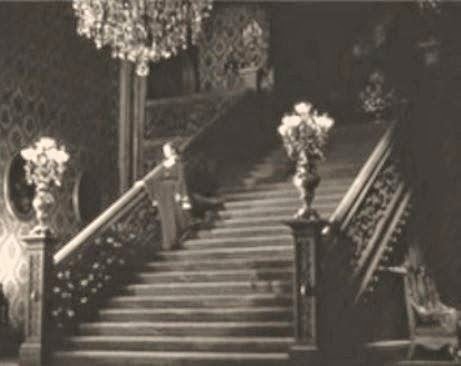 This is an excerpt from 'What Happened to Alex Manning', book 1 of 2, set in Maine in the early 1900s. This is saga follows Alex Manning and his family through the Roaring 20s and Prohibition Era into the Great Depression.
This is an excerpt from 'What Happened to Alex Manning', book 1 of 2, set in Maine in the early 1900s. This is saga follows Alex Manning and his family through the Roaring 20s and Prohibition Era into the Great Depression. If you like historical fiction seasoned with murder, treachery, love, loyalty, and shocking twists, then this is a must read at only .99, £0.77 & CDN$1.10 on Kindle or Nook.
Alex reached the railing at the top of the stairs and grasped Charlotte’s wrist. The full truth of it all struck him, forcefully. He needed to stop; to replay the events in his head and sort it all out. He desperately needed time. If only Charlotte would wait and allow him to think it through.
Charlotte’s shrill scream jumbled the thoughts whirling in his head. Urgently, he fought to put them in order again and make sense of everything. His anger dissipated as he struggled with the horrifying memories. With his heart thumping wildly, a sharp pain shot through his head.
If only Charlotte would stop. In her panicked state, she struggled with him certain that he meant to harm her. He stammered crazily as she flailed at him with tight fists. Terrified, he felt her pull away and she teetered backward at the edge of the top step.
Her arms pin wheeled twice, as her shoes slipped on the smooth marble. Alex grasped her arm and wrenched her back with all of his strength. She flew by him and slammed into the wall across the hall, coming to rest in a heap there.
Off balance at the top of the stairs, Alex fell forward, reaching for the balustrade as he went. With nothing to stop him from falling, he tumbled, thumping and banging, all the way to the stone floor below.

http://www.amazon.com/What-Happened-Alex-Manning-Family-ebook/dp/B00DXKJK64
http://www.amazon.co.uk/What-Happened-Manning-Family-Series-ebook/dp/B00DXKJK64
http://www.amazon.ca/gp/product/B00DXKJK64
http://www.barnesandnoble.com/w/what-happened-to-alex-manning-kim-scott/1117056687?ean=2940148375210
http://www.kimscottbooks.com/
Like · · Share

Published on April 08, 2014 07:05
History Trivia - Winchester Cathedral dedicated by Walkelin
April 8

217 Roman Emperor Caracalla was assassinated, and succeeded by his Praetorian Guard prefect, Marcus Opellius Macrinus.
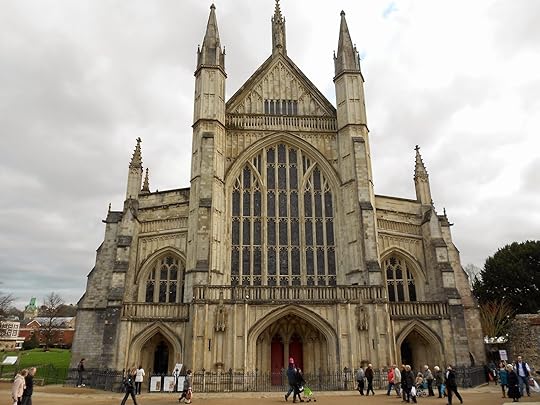
1093 The new Winchester Cathedral was dedicated by Walkelin.
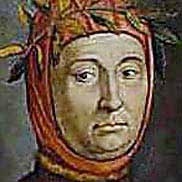
1341, Petrarch was crowned Poet Laureate in Rome.

1364 Charles V crowned King of France. He led France in recovery from the devastation of the first part of the Hundred Years' War.
 1378, Urban VI was elected Roman Catholic pope.
1378, Urban VI was elected Roman Catholic pope.


217 Roman Emperor Caracalla was assassinated, and succeeded by his Praetorian Guard prefect, Marcus Opellius Macrinus.

1093 The new Winchester Cathedral was dedicated by Walkelin.

1341, Petrarch was crowned Poet Laureate in Rome.

1364 Charles V crowned King of France. He led France in recovery from the devastation of the first part of the Hundred Years' War.
 1378, Urban VI was elected Roman Catholic pope.
1378, Urban VI was elected Roman Catholic pope.
Published on April 08, 2014 05:49
April 7, 2014
Rev's church could have been where Romeo and Juliet died
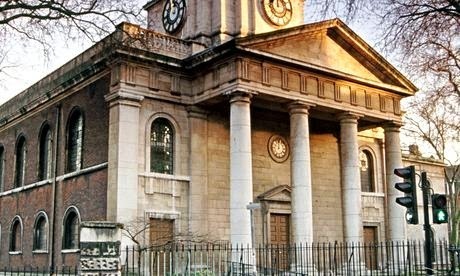
The predecessor of St Leonard's church – St Saviour's in the television series - is where Shakespeare would have worshipped while living in Shoreditch. Photograph: Eric Nathan /Alamy
Shakespeare knew television's fictional St Saviour's as a real church in Shoreditch. Archaeology may reveal that it inspired one of his most famous scenes
Robin Stummer
The Observer,
Some people believe Shakespeare may have worshipped there, even that it might have inspired scenes in Romeo and Juliet. Today it provides the backdrop to the hit BBC series Rev, starring Tom Hollander. Soon, an east London church could be the site of one of the most exciting archaeological investigations in recent times, one that may shed new light on the life of the playwright.
St Leonard's church in Shoreditch – an 18th-century building known to fans of Rev as St Saviour in the Marshes – stands on a site occupied by its medieval predecessor, also known as St Leonard's until it was demolished in the 1730s.
Historians have long speculated that large portions of the medieval church familiar to Shakespeare and many of his contemporaries might survive intact beneath the present church and its surrounding land. However, due to cost and the technical difficulties of investigating beneath and around a listed building used for worship, no work has been carried out.
That looks set to change. Last week the mystery of St Leonard's drew in Maurizio Seracini, professor of structural engineering at the University of California, San Diego, and an expert in the non-invasive investigation of historical sites and artworks.
Seracini, best known for his recent research into the long-lost Leonardo da Vinci mural The Battle of Anghiari , at the Palazzo Vecchio in Florence, says he will discuss potential research work at St Leonard's with fellow academics in the US. If agreed, he will draw up a proposal for a detailed historical assessment of the site using ground-penetrating radar, 3D modelling and fibre-optic cameras.
"I'd like London, and Britain, to be involved," he said. "It's potentially one of the milestones in the history of London, and not just because of Shakespeare. If you look here but find nothing, it's either because you looked in the wrong place or that there was nothing there anyway. But even then something worthwhile will have been done. This church, its site, is a historical and cultural landmark for Britain. It would be a noble and necessary thing to do."
In recent years archaeologists working nearby have uncovered the remains of two key theatres linked to Shakespeare's early career, The Curtain and The Theatre. Both were near the playwright's lodgings during his formative, largely undocumented years in east London. Shoreditch was, and remains, an area notorious for drinking and disorder, a maze of alleys dotted with marshy fields, rank with crime and the haunt of actors and musicians.
Opened in 1576, The Theatre was London's first purpose-built playhouse and was run by actor-manager James Burbage. The site was excavated in 2008 by experts from the Museum of London Archaeology. In 2012 the remains of The Curtain, where Romeo and Juliet and Henry V were first performed, were excavated ahead of redevelopment.
Contemporaries of Shakespeare buried at the old St Leonard's include James, Richard and Cuthbert Burbage, theatre owners and actors within Shakespeare's inner circle, and fellow actors Richard Cowley, William Sly and Gabriel Spencer. Also buried there are Will Somers, court jester to Henry VIII, and the leading Elizabethan comic actor, Richard Tarlton. Christopher Marlowe and Robert Greene also lodged in the area.
"If something were found, that would give us a contact with Shakespearean Shoreditch," says writer and historian Charles Nicholl, an authority on Shakespeare's life in London. "There is good evidence that Romeo and Juliet was first performed at The Curtain, and when Shakespeare was writing all his earliest plays Shoreditch is where they would have been performed, before the Globe was built in 1599."
Some historians hold that the tomb scene in Romeo and Juliet, with its "stony" sepulchre in which the tragic lovers end their lives, has similarities to the decaying, tomb-crowded interior of the church. By Shakespeare's time, the church was already nearly 500 years old, crammed with crumbling tombs and memorials, some of them dating back to the Crusades.
Then as now, Shoreditch was crumbling and crowded. "You get an idea of what a close-packed quarter this area was," says Nicholl. "The buildings, the theatres and church are all so close together."
Paul Turp, present vicar of St Leonard's, says: "Exploratory measurement work, which is non-invasive and uses new technology, would not harm the present church fabric in any way. If we do find some of that medieval church, I shall endeavour to have it formally protected. What might lie beneath is of great importance."
http://www.theguardian.com/science/2014/apr/06/rev-church-may-have-inspired-shakespeare

Published on April 07, 2014 18:04
Ancient Egyptian Mummy Found With Brain, No Heart
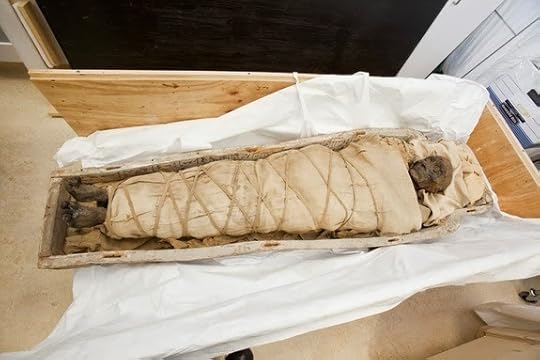
This 1,700-year-old mummy has a brain, no heart and plaques over her sternum and abdomen, say researchers. Here, the mummy is being unboxed on the first day of a scanning session at the Montreal Neurological Institute.
Credit: Photo courtesy Nicolas Morin
By Owen Jarus, Live Science Contributor
An ancient Egyptian mummy found with an intact brain, but no heart, has a plaque on her abdomen that may have been intended to ritually heal her, say a team of researchers who examined the female body with CT scans.
The woman probably lived around 1,700 years ago, at a time when Egypt was under Roman rule and Christianity was spreading, according to radiocarbon dating. Her name is unknown and she died between age 30 and 50. Like many Egyptians, she had terrible dental problems and had lost many of her teeth.
The use of mummification was in decline as Roman culture and Christianity took hold in the country. But this woman and her family, apparently strong in their traditional Egyptian beliefs, insisted on having the procedure done. [See Images of the Ancient Egyptian Mummy & Weird Plaque]
To remove her organs, the scans show, the embalmers created a hole through her perineum and removed her intestines, stomach, liver and even her heart. Her brain, however, was left intact. Spices and lichen were spread over her head and abdomen, and she was wrapped and presumably put in a coffin; her final resting place was likely near Luxor, 19th century records say.
Before the embalmers were finished they filled the hole in the perineum with linen and resin. They also put two thin plaques similar to cartonnage (a plastered material) on her skin above her sternum and abdomen, something that may have been intended to ritually heal the damage the embalmers had done and act as a replacement, of sorts, for her removed heart.
"The power of current medical imaging technologies to provide evidence of change in ancient Egyptian mortuary ritual cannot be understated," writes the research team in an article to be published in the "Yearbook of Mummy Studies." While the technology is powerful it does have some limits. The presence of spices and lichen on the head were first found in the 19th century when the head was unwrapped. The CT scans revealed that they are likely also located on the mummy's abdomen, a determination aided by this unwrapping.
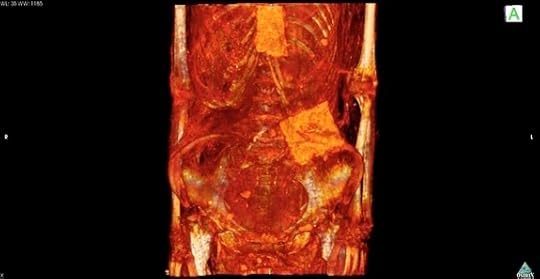 [image error]
[image error]
 One of the most puzzling things revealed in the CT scans were two thin plaques made of something similar to cartonnage (a plastered material), placed over the female mummy's sternum and abdomen.
One of the most puzzling things revealed in the CT scans were two thin plaques made of something similar to cartonnage (a plastered material), placed over the female mummy's sternum and abdomen.Credit: Image courtesy Andrew WadeView full size imageThe mummy and its coffin — now at the Redpath Museum at McGill University in Montreal — were purchased at Luxor in the 19th century. Scientists aren't sure if the coffin she is in now was originally meant for her. Antiquity dealers in the 19th century would sometimes place a mummy into a coffin from another tomb to earn more money. Coffins were also sometimes reused in antiquity.
What happened to the heart?
The heart played a central role in ancient Egyptian religion, being weighed against the feather of ma'at (an Egyptian concept that included truth and justice) to see if one was worthy of entering the afterlife. For this reason, Egyptologists had long assumed the Egyptians didn't remove that organ, something that recent research into several mummies, including this one, contradicts. [See Images of the Egyptian Mummification Process]
With evidence showing the heart was removed on at least some occasions Egyptologists are left with a question, what did the ancient Egyptians do with it?
"We don't really know what's happening to the hearts that are removed," said Andrew Wade, a professor at McMaster University in Hamilton, Canada, in an interview with Live Science. During some time periods, the hearts may have been put in canopic jars, a type of jar used to hold internal organs, though tissue analysis is needed to confirm this idea, Wade said.
Healing the mummy?
Even more mysterious is a question that Wade's team is currently grappling with: Why did this woman receive two plaques in areas that were never sliced open?
The plaque on the sternum may have acted as a replacement, of sorts, for the removed heart, they said. However, the one on the abdomen is more ambiguous. The team knows that mummies who were dissected through the abdomen received a plaque like this, however, scans reveal this woman's abdomen was never touched.
The embalmers may have thought the plaque would help by ritually healing the hole they had created in the woman's perineum, the researchers speculate. By doing so they may have been trying to give her "a more favorable afterlife, healed and protected as she was by the embalmer's additional efforts," the researchers write in their paper.
In addition to the current study, another paper presenting informationabout the mummy was published in 2012 in the journal RSNA RadioGraphics, and a reconstruction of the mummy's face by forensic artist Victoria Lywood was released last year.
http://www.livescience.com/44644-ancient-egyptian-mummy-has-no-heart.html

Published on April 07, 2014 17:58
Search for Inca 'lost city' in Amazon may endanger indigenous people
 An attempt to find the Inca 'lost city' of Paititi in the forests of south-east Peru could spread diseases among the isolated indigenous Nanti people. Photograph: EPA A six-week expedition starting in July will try to find Paititi in the Megantoni National Sanctuary in south-east Peru
An attempt to find the Inca 'lost city' of Paititi in the forests of south-east Peru could spread diseases among the isolated indigenous Nanti people. Photograph: EPA A six-week expedition starting in July will try to find Paititi in the Megantoni National Sanctuary in south-east PeruDavid Hill
theguardian.com,
A French writer and adventurer plans to explore one of the most remote parts of the Peruvian Amazon in search of a "lost" or "secret city" that may have been built by the Incas, but there are fears that the expedition could endanger the health of isolated tribes that have never been exposed to common human diseases.
Thierry Jamin believes that the city, which he calls "Paititi", could lie somewhere in a 215,000-hectare protected area called the Megantoni National Sanctuary in the Cuzco region of south-east Peru.
"The magnificent discoveries realised by my group in the valleys of Lacco, Chunchusmayo and Cusirini in the north of the department of Cuzco lead towards a precise zone situated in the national sanctuary of Megantoni," Jamin told the Guardian via email.
"Several natives of the forest – Matsiguengas – assert that 'monumental ruins' exist at the top of a strange square mountain. I think that we are very close to officialise the existence of this big archaeological site."
According to his website, Jamin is planning a six-week expedition starting in July. He will be assisted by an NGO based in Cuzco that he leads and a group of Machiguengas from a village near the sanctuary.
His website describes Paititi, or "Paititi-Eldorado", as the "Incas' secret city" – "one of the most fascinating stories of the Inca mythology", the "biggest archaeological enigma of South America", and the place where the Incas hid "all the treasures of [their] empire" when Europeans invaded.

The search for Paititi or an Inca "lost city" has attracted scores of people and considerable controversy ever since the 16th century, with conflicting theories and ideas about where it might be and whether it really exists.
But some experts fear that such an expedition would pose a threat to isolated indigenous Nanti people – sometimes called "Kugapakoris" – within the sanctuary. One of the main reasons for the sanctuary's creation 10 years ago was to protect groups of indigenous people who have had little or no contact with outsiders and are extremely vulnerable to infectious diseases because of their lack of resistance.
According to the sanctuary's "master plan" for 2007-2011 – a 160-page government document outlining strategies and programmes to manage the area – the 215,000 hectares are divided into a number of "zones" where different activities are permitted. The biggest, most remote zone is in the sanctuary's far east and is called the "Strict Protection Zone" (ZPA). Its first stated aim is to protect "voluntarily isolated indigenous people", with scientific investigation only allowed in "exceptional circumstances".
Jamin is keeping the precise destination of the expedition a secret, but told the Guardian he intended to travel up the river Ticumpinia – not the river Timpia where he said there were "numerous Kuga-Pakuri communities".
"We don't want to tell anyone about our study zones, nor disseminate the exact locations of the sites we have found," he said.
Lelis Rivera, who works for the NGO Cedia and played a key role in the sanctuary's creation, pointed out that the presence of any outsiders in the sanctuary "could cause danger to the people living there" and that entering the ZPA in particular is "completely prohibited" by Peruvian law.
"Any people currently living in the upper Timpia or Ticumpinia regions are extremely vulnerable to germ transmission – that's the nature of living in relative social and immunological isolation," said anthropologist Christine Beier from the NGO Cabeceras Aid Project and one of the world's leading experts on Nanti society and history.
Jamin told the Guardian that he will apply to the ministry of environment, which oversees management of "protected natural areas", for permission to enter the Megantoni sanctuary. He said he has already applied for permission from the ministry of culture.
However, Ramon Rivero Mejia at the culture ministry says it has received no application from either Jamin, any member of his team or the NGO that Jamin presides over.
Some experts doubt that Paititi is where Jamin thinks it is. "The Incas conquered territories of the Machiguenga and Piro and built roads, bridges and some fortified settlements, meaning it's possible that in Megantoni some Inca-type buildings and objects will be found," said Martti Parssinen, a Finnish archaeologist and historian who has researched Peru and the Incas for decades.
"Nevertheless, Paititi is not there … At first, it was located from the confluence of the Madre de Díos and the Beni rivers toward the east or south, but during the colonial period some Inca refugees probably reestablished it near the present Brazilian Pacaas Novos mountains."
Asked by the Guardian why he thinks archaeological remains in Megantoni might be related to the Incas, Jamin said: "We don't know if they're Inca or pre-Inca. One of the objectives of our 2014 campaign will be to establish that."
http://www.theguardian.com/science/2014/apr/07/search-inca-lost-city-amazon-peru-paititi

Published on April 07, 2014 17:50
Diane Turner - London Rocks - 05.04.2014
Published on April 07, 2014 06:30
History Trivia - Attila the Hun plunders Metz, France.
April 7

30 Scholars' estimated date for Jesus' crucifixion by Roman troops in Jerusalem.
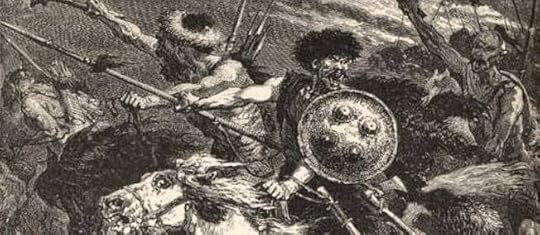
451 Attila the Hun plundered Metz, France.
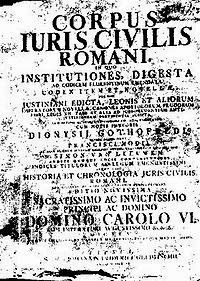
529 First draft of the Corpus Juris Civilis (a fundamental work in jurisprudence) was issued by Eastern Roman Emperor Justinian I.
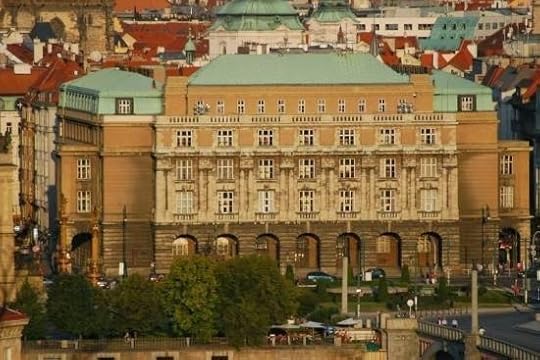
1348 Charles University was founded in Prague.

1506 St. Francis Xavier was born. A passionate missionary of Catholicism, Francis was instrumental in establishing Christianity in India and Japan. He was also one of the earliest members of the Society of Jesus.


30 Scholars' estimated date for Jesus' crucifixion by Roman troops in Jerusalem.

451 Attila the Hun plundered Metz, France.

529 First draft of the Corpus Juris Civilis (a fundamental work in jurisprudence) was issued by Eastern Roman Emperor Justinian I.

1348 Charles University was founded in Prague.

1506 St. Francis Xavier was born. A passionate missionary of Catholicism, Francis was instrumental in establishing Christianity in India and Japan. He was also one of the earliest members of the Society of Jesus.

Published on April 07, 2014 04:50
April 6, 2014
Shepherds Spread Grain Along Silk Road 5,000 Years Ago

Kazakh boy holds the reins of two horses in the pasture.
Credit: Boy and horses via Shutterstock
Tim Wall, Discovery News
Nearly 5,000 years ago, nomadic shepherds opened some of the first links between eastern and western Asia. Archaeologists recently discovered domesticated crops from opposite sides of the continent mingled together in ancient herders' campsites found in the rugged grasslands and mountains of central Asia.
“Ancient wheat and broomcorn millet, recovered in nomadic campsites in Kazakhstan, show that prehistoric herders in Central Eurasia had incorporated both regional crops into their economy and rituals nearly 5,000 years ago,” said Micheal Frachetti, archaeologist at Washington University in St. Louis, Mo. and co-author of the study published in the Proceedings of the Royal Society B.
One of the grains found in Kazahkstan, bread wheat (Triticum aestivum), was cultivated in the Middle East by 6,000 years ago, but didn’t show up in East Asian archaeological sites until 4,500 years ago.
Likewise, another grain found in the shepherd’s camps, domesticated broomcorn millet (Panicum miliaceum), may have originated in what is now China 8,000 years ago, but didn’t appear in southwestern Asia until 4,000 years ago.
Farming Sprang Up In Multiple Places
The nomadic shepherds may have been a crucial link across the vast expanse of steppe, desert and mountains that separated the agricultural and economic systems of eastern and western Asia.
Central Asian shepherds did more than transport grains. The archaeologists also found evidence that herders began farming millet, wheat, barley and legumes by 4,000 years ago. The discovery of this prehistoric agricultural activity in Turkmenistan and Kazakhstan pushed back the earliest know farming in the region by 2,000 years.
Terracotta Warriors Inspired by Ancient Greek Art
The intrepid ancient shepherds of central Asia blazed trails that would expand into the economic highway of the ancient and medieval world. Eventually, the route would carry silks from Han Dynasty China to the Roman Empire and earn the name “Silk Road.”
The route remains in use today, though now railroads have replaced camels as the preferred means of travel.
This story was provided by Discovery News.
http://www.livescience.com/44614-shepherds-spread-grain-along-silk-road-5000-years-ago.html

Published on April 06, 2014 12:36
Monks' Secret: Asbestos Lurking Beneath Byzantine Wall Paintings
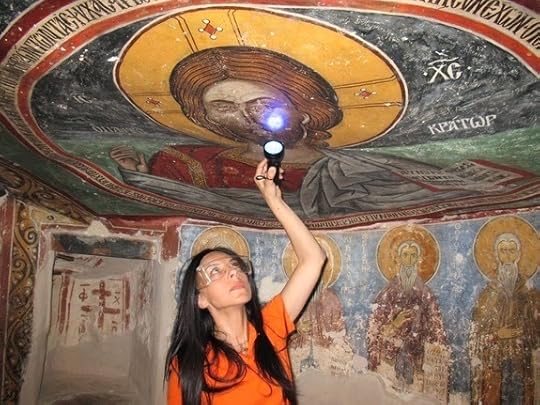 UCLA archaeologist Ioanna Kakoulli examines a painting in the monastery under UV light.
UCLA archaeologist Ioanna Kakoulli examines a painting in the monastery under UV light.By Joseph Castro, Live Science Contributor
Hundreds of years before asbestos became ubiquitous in the construction industry, Byzantine monks used the fibrous material in plaster coatings underlying their wall paintings during the late 1100s, new research shows.
Asbestos is a type of natural, rock-forming mineral known for its ability to separate into long, flexible fibers. It has long been thought that asbestos fibers, which are corrosion- and combustion-resistant, were first integrated into such things as plaster, finish coatings and floors after the Industrial Revolution.
But while investigating the 12th-century paintings in the Byzantine monastery Enkleistra of St. Neophytos in Cyprus, UCLA researchers discovered the magnesium silicate mineral, chrysotile (white asbestos), in the finish coating of the plaster underneath a portion of a wall painting. The chrysotile provided a smooth layer with a mirrorlike surface for the painting. [See Photos of the Byzantine Monastery and 12th-Century Paintings]
"[The monks] probably wanted to give more shine and different properties to this layer," said UCLA archaeological scientist Ioanna Kakoulli, lead author of the new study, published online last month in the Journal of Archaeological Science. "It definitely wasn't a casual decision — they must have understood the properties of the material."
A long history of use
Though all six asbestos minerals are now known to be carcinogenic, people have taken advantage of the fibrous materials' unique properties for millennia. About 4,500 years ago, artisans mixed asbestos minerals with clay to produce stronger pottery. And 2,000 years ago, asbestos fibers were woven into textiles to make fireproof napkins (that were "washed" by tossing them into fire), or to make a special fabric that could separate human ashes from funeral pyre material during cremations, Kakoulli said. "It was considered to have magical powers," she told Live Science.
In the late 19th century, people used asbestos in industrial products — including cements, wall plasters, joint (drywall) compounds, fire-retardant coatings and roofing, among other things — to increase their durability, insulation and weathering protection.
Given this history, Kakoulli and her colleagues weren't expecting to find asbestos on the walls of Enkleistra of St. Neophytos. They initially set out to see if there was any change in the materials used to create the monastery's numerous wall paintings over time.
"We wanted to see how the technological part of making these paintings follows or reveals anything of what we see in their iconography and style," Kakoulli said.
The researchers analyzed some of the paintings on site using various techniques, including infrared, ultraviolet and X-ray fluorescence imaging. They also collected micro-samples of the paintings and further analyzed their molecular and elemental makeup with powerful scanning electron microscopes and other methods.
A surprising find
One of the paintings they inspected depicted the "Enthroned Christ" holding a book with a red frame. When they analyzed the red frame, they found an asbestos-rich layer that was applied as a finish coating between a red paint layer and a plaster layer made up mostly of plant fibers. "So far, we've only found it in relation to those red pigments," Kakoulli said.
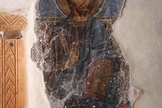 [image error] They found an asbestos-rich layer in the painting "Enthroned Christ," which would've been applied as a finish coating between a red paint layer and a plaster layer made up mostly of plant fibers.
[image error] They found an asbestos-rich layer in the painting "Enthroned Christ," which would've been applied as a finish coating between a red paint layer and a plaster layer made up mostly of plant fibers.Credit: Ioanna Kakoulli, UCLAView full size imageInterestingly, the main deposits of asbestos in Cyprus come from a high-elevation area approximately 38 miles (60 km) from the monastery, which is near the coast. This location suggests the monks may have been involved in a kind of interregional trade for the asbestos.
The discovery raises many questions, such as why the asbestos was used in this context (and only for the red frame in the painting). It's also curious why the fibrous material apparently wasn't used again in coatings until the 19th century. [Image Gallery: Stunning Byzantine Mosaic]
The scientists are now searching for answers. They plan to return to Cyprus to characterize more of the paintings at Enkleistra of St. Neophytos. Kakoulli also hopes to revisit other wall paintings she's previously studied in Cyprus, to see if they also contained asbestos.
"I have a feeling that it's something that can be easily missed," Kakoulli said. "This was quite an accidental discovery."
http://www.livescience.com/44514-byzantine-monks-used-asbestos-beneath-artwork.html

Published on April 06, 2014 12:26




